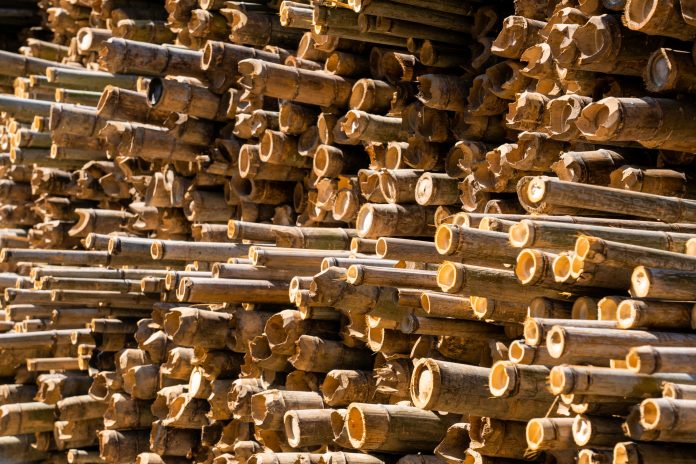Researchers from the University of Bristol have discovered a way to use bamboo-safe without damaging the material, opening new doors for MMC
This new technique provides a reliable predictive model for a simple method of connecting bamboo, a material frequently employed in wooden constructions.
Through the creation of standardised procedures for bamboo usage in construction, its environmentally friendly characteristics can be fully realised. Bamboo has eco-friendly qualities, such as its ability to absorb carbon dioxide at a higher rate than many other types of wood.
Bamboo-safe screws can help the industry reach its green goals
“Bamboo can help to fight climate change by sequestering carbon from the atmosphere,” said Dominika Malkowska from Bristol’s School of Civil, Aerospace and Design Engineering.
“Wood also does this but takes 30 years to mature for harvesting while bamboo only takes four to five years, so we can sequester carbon at a much faster rate if we use bamboo rather than timber,” she continued.
Plantation trials are ongoing in Southern Europe to identify the bamboo species most suitable for the local climate. Success in these trials could pave the way for bamboo as a future construction material in the UK. Bamboo construction is common in places like the Philippines, where this research can be directly applied.
Dominika Malkowska conducted over 200 experimental tests on bamboo connections, considering factors like screw material, count, spacing, diameter, bamboo wall thickness, and steel plate thickness. Her most significant finding is that well-designed screw connections do not cause bamboo to split, making bamboo-safe screws a viable option for construction.
“It also has several benefits over the conventionally used bolted connection with cement mortar infill to the inside of the bamboo pole, such as potential reduction in carbon footprint, easy disassembly on site and superior stiffness and ductility, to name a few,” she explained.
“Bamboo, in general, is susceptible to cracking due to its material characteristics, such as fibres running in one direction only, unlike in wood where fibres have the tendency to grow in a spiral around the tree trunk, so the screws may not seem appropriate as there is no spiral fibre to stop the fracture from happening. But this study proved otherwise,” she continued.
Research will continue to unlock the method’s potential
This method is ready for immediate use in straightforward, lightly loaded connections. It may also be used for complex applications by increasing the number of screws. So far, only a limited number of screws have been tested, resulting in lower load capacity. More research is needed to see if the method can handle heavier loads.
Future research will examine a higher number of screws per connection to match the capacity of typical bolted connections. Malkowska will investigate the method’s performance in actual structures, such as shear walls.
“Bamboo connections do not need to be complex. Knowledge of timber has its use in bamboo,” concluded Malkowska.

















